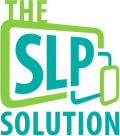Hearing Loss Therapy Guides for SLPs
Step-by-Step plans for a variety of skills that often come up when working with children with hearing loss – Plus, wording for your goals!
What is Task Analysis?
Task analysis is the process of breaking a larger skill down into smaller, sequential steps. With each step that the child masters, he grows closer to being able to perform the full skill independently. Tasks analysis is an evidence-based instructional method which has been found especially effective for children who do not respond to regular instruction, which makes it perfect for the children on our case loads.
While the process of task analysis has been studied and backed by research, there aren’t always agreed-upon ways to break down a skill. Every SLP may have a slightly different method of breaking down skills into step-by-step plans. What’s important is that the steps are achievable and sequential so that the child sees incremental success on the way to learning a new skill.
The following therapy guides represent our task analysis for each skill. You’ll also find sample text for your goals.
Looking for Therapy Activities? Worksheets? Troubleshooting? More Help?
We have more where this came from! Get access to the full SLP Solution Curriculum when you become a member!
Membership Includes…
- Therapy ideas for each step below
- No Prep Worksheets and Therapy Kits
- Troubleshooting Advice
- Access to our staff and community for asking questions
- Monthly webinars for continuing education
Our Step-By-Step Guides:
How to Use:
Click the skill that you’d like to expand. You’ll find our task analysis of the steps you can follow in therapy to teach that skill. You’ll also find sample text to include in your goal writing. To get detailed therapy activities for each step below, please join our membership program to get access to the full SLP Solution Curriculum.
- As a multi-disciplinary team (including parents), choose a communication modality: A modality should be chosen (auditory/verbal therapy approach, sign language only approach, combination approach)
- Create Schedule for Equipment Check: Work with the school team to determine who will do daily equipment checks. Plan to check equipment each time you meet with the child.
- Determine Therapy Needs: SLP will complete evaluation and determine which of the following types of interventions are needed: early communication skills, social and interaction skills, receptive and expressive language skills, environmental modifications, auditory training, speech or sign intelligiblity work, speech reading.
1. Train auditory detection
- Use a speech screen or put something in front of your face that won’t block too much sound
- Give the child a buzzer or some way to indicate when they hear a sound
- Pause behind the speech screen and then say a sound (any speech sound). Encourage her to listen for the sound and then push the buzzer when she hears it.
- Start with easier sounds (like loud vowels) and then start introducing the less visible consonants that she is not producing (like /k/, /g/, etc.)
2. Train auditory discrimination
- Once you are sure she is definitely hearing all of the sounds, train her to respond only to certain sounds. Start with ones she’s familiar with and is doing herself. Tell her that she is only to push the buzzer when she hears that specific sound (like /b/). Give her a visual of the letter so she remembers which sound to listen for.
- Say /b/ and have her push the buzzer. Then, say a different sound but don’t let her push the buzzer. Point out to her that the sound was different than the target so she shouldn’t push the buzzer.
- Keep doing this until she can correctly identify if you said an “easy” sound. Then, switch and have her start picking out some of the harder sounds (like /k/ and /g/).
- Alternatively, say two sounds and have her tell you if they are the same or different (like /k/ and /b/). Start with sounds that are very different and gradually move toward sounds that are more similar.
3. Train sound imitation
- Start by having her imitate sounds that are easy for her. You say a sound, then she says it back.
- Once she understands the activity, start including the sounds that are harder for them. If she has trouble producing them, give her cues (tactile, visual, and verbal) to help her figure out where to put her articulators. Do some articulator awareness education if she’s not sure what you’re talking about when you describe where to put something.
What Do I Do in Therapy?
If you’re still not sure what to do in therapy, don’t worry! We have more resources for you! The SLP Solution Curriculum contains detailed descriptions of what you can do in therapy for each of the steps listed above. Join today to get all of the therapy ideas, worksheets, and support!

